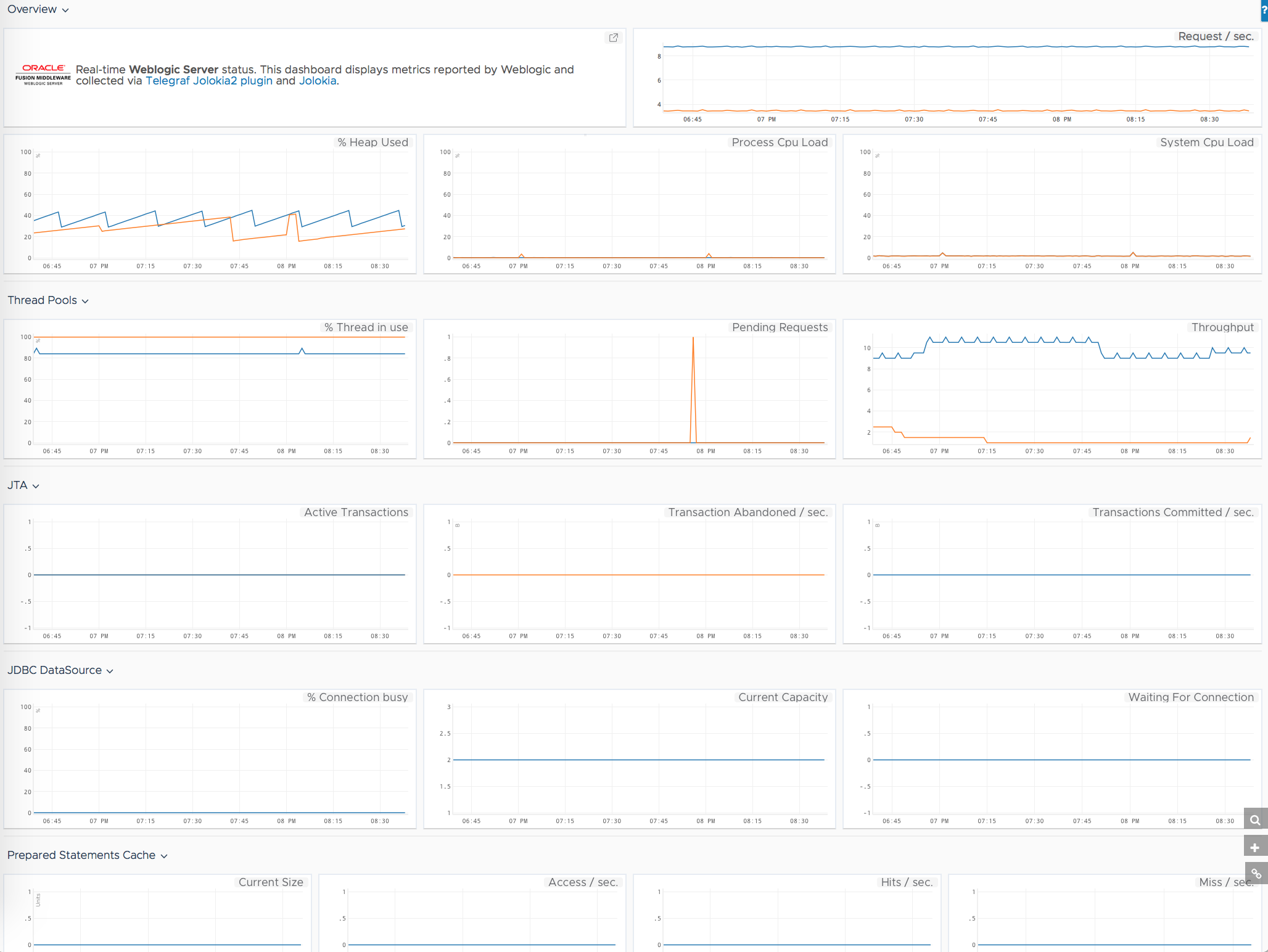This page provides an overview of what you can do with the Oracle WebLogic Server integration. The documentation pages only for a limited number of integrations contain the setup steps and instructions. If you do not see the setup steps here, navigate to the Operations for Applications GUI. The detailed instructions for setting up and configuring all integrations, including the Oracle WebLogic Server integration are on the Setup tab of the integration.
- Log in to your Operations for Applications instance.
- Click Integrations on the toolbar, search for and click the Oracle WebLogic Server tile.
- Click the Setup tab and you will see the most recent and up-to-date instructions.
Oracle WebLogic Server
The Oracle WebLogic Server enables building and deploying Java Platform Enterprise Edition (Java EE) applications. The WebLogic Server infrastructure supports the deployment of many types of distributed applications.
In addition to setting up the metrics flow, this integration also sets up a dashboard.
